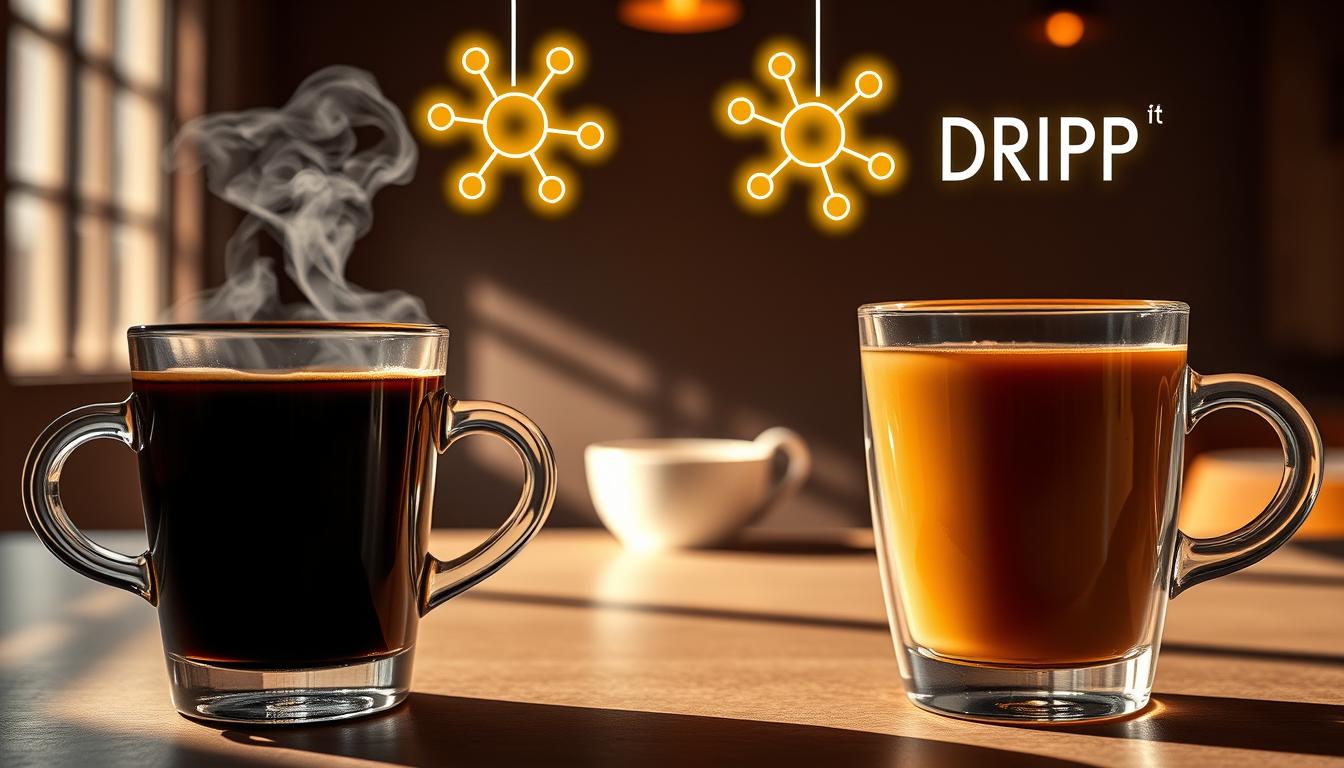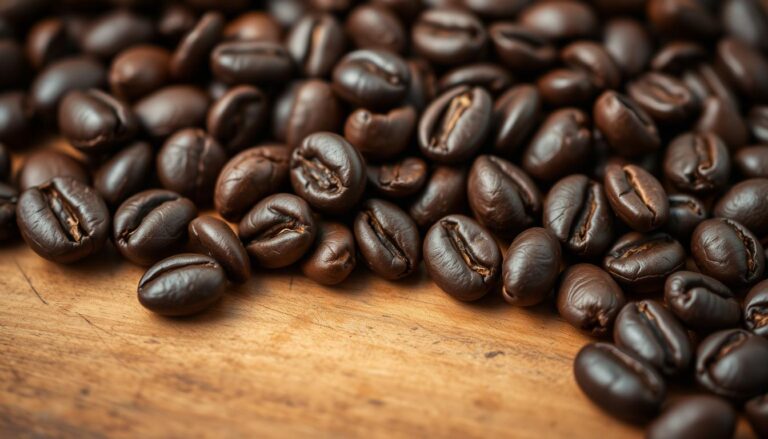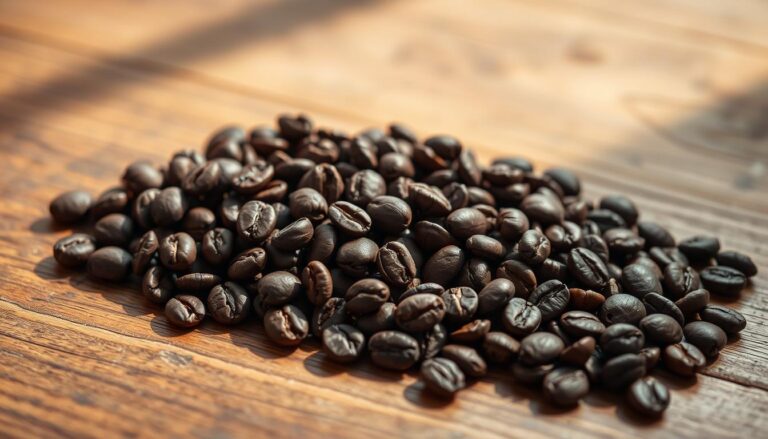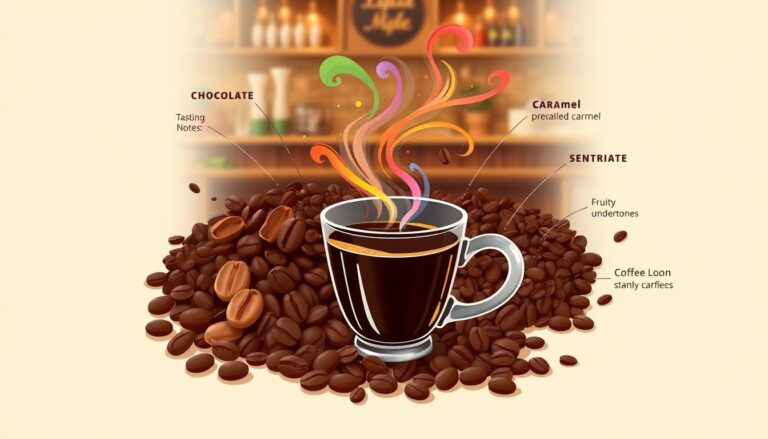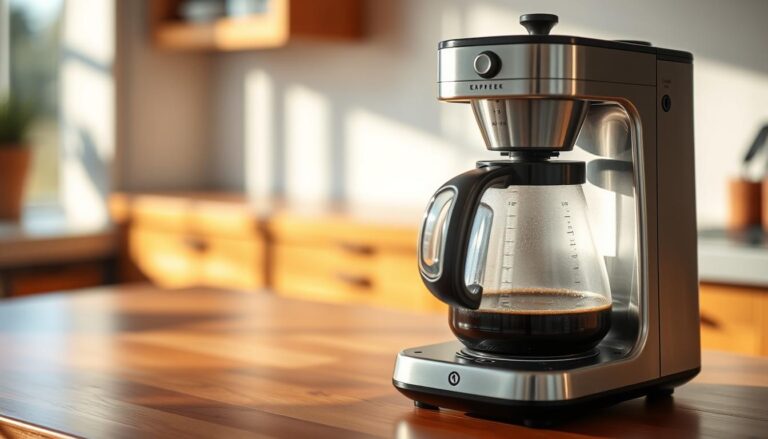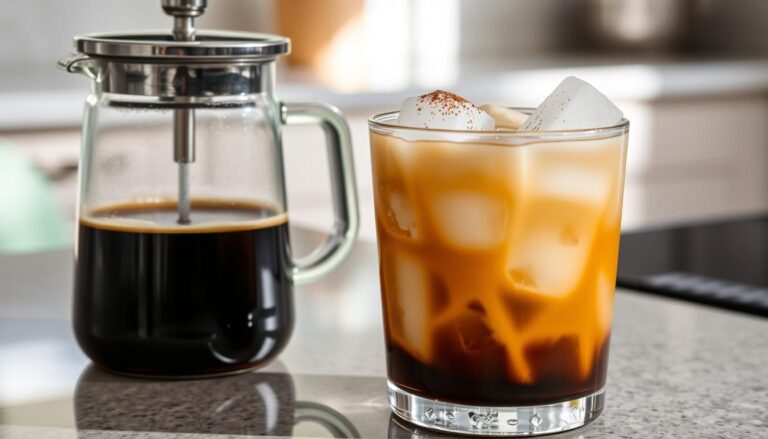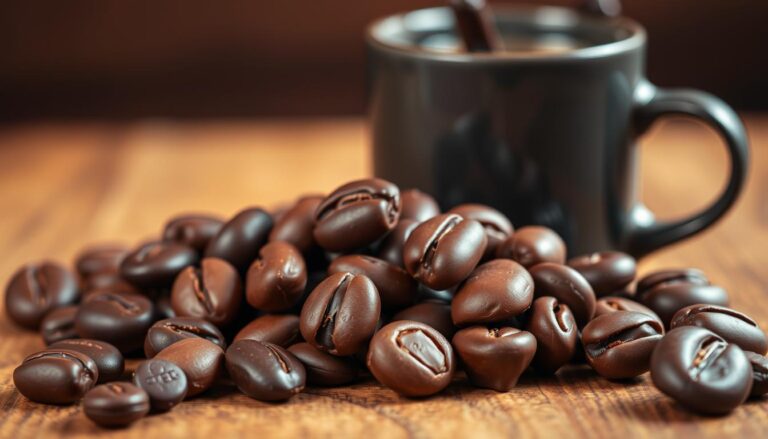Ever wondered if espresso packs more caffeine than drip coffee? This question is a hot topic among coffee lovers and casual drinkers. Both drinks come from the same beans, but how they’re made changes everything. Let’s explore the caffeine difference between espresso and drip coffee.
We’ll look at flavors, brewing methods, and caffeine levels. This will help you pick the perfect coffee for your day.
Caffeine Basics
Caffeine is a natural stimulant found in coffee and other drinks. Knowing how caffeine affects your diet is key to understanding its health impacts. This part looks at what caffeine is, how it works in your body, and its effects on both your mind and body.
What is Caffeine?
Caffeine is a substance that makes you feel more alert and awake. It’s in coffee, tea, and chocolate. Caffeine works by blocking certain brain receptors, making you feel more awake and less tired.
How Caffeine Affects Your Body
Caffeine does more than just keep you awake. It can also:
- Increase your heart rate: It makes your heart beat faster.
- Boost your brain power: It can help you focus better and remember things.
- Make you feel happier: Drinking caffeine often makes you feel more joyful.
Knowing how caffeine fits into your day can help you enjoy its benefits. But, it’s also important to watch how much you have to avoid too many negative effects.
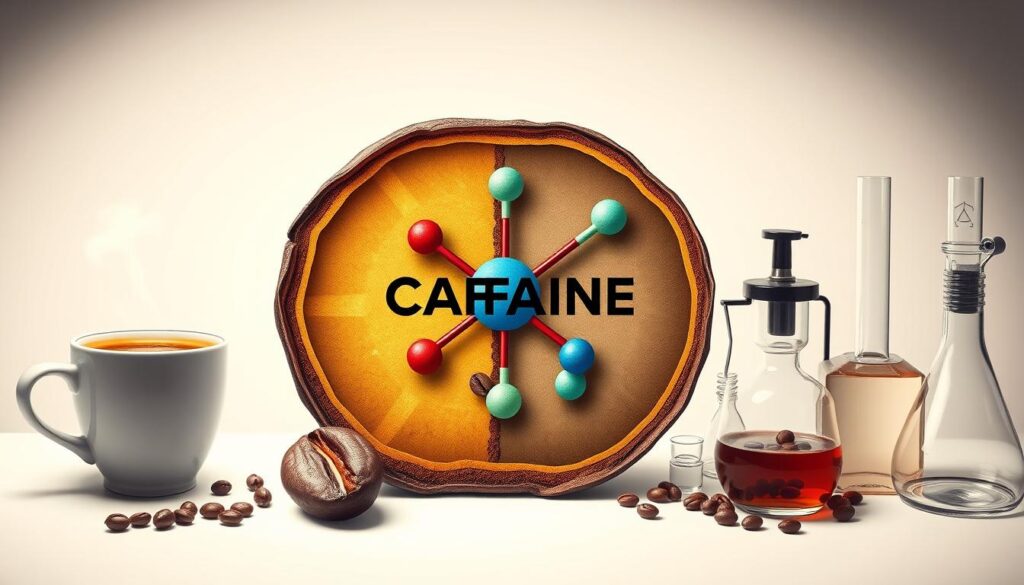
Brewing Methods Explained
Learning about coffee brewing methods can make you appreciate coffee more. Each way affects the taste and caffeine level. It’s key to know the differences between espresso and drip coffee brewing.
What is Espresso?
Espresso is a strong coffee made by pushing hot water through fine coffee grounds. This method started in Italy in the early 1900s. It gives a rich taste and a unique crema on top.
Espresso lovers enjoy its bold flavor. It’s different from other coffee brewing methods.
What is Drip Coffee?
Drip coffee was invented by Melitta Bentz, a German. It uses gravity to let water flow through coffee grounds in a filter. The coffee drips into a pot below, making a smooth drink.
This method is simple and makes a lot of coffee. It’s great for serving many people.
Key Differences in Brewing Techniques
Comparing brewing methods shows big differences. Espresso needs fine grounds and high pressure. Drip coffee uses coarser grounds and gravity.
Espresso is brewed fast, in 20-30 seconds. Drip coffee takes longer, several minutes. These differences change the flavor and caffeine level, affecting your coffee experience.
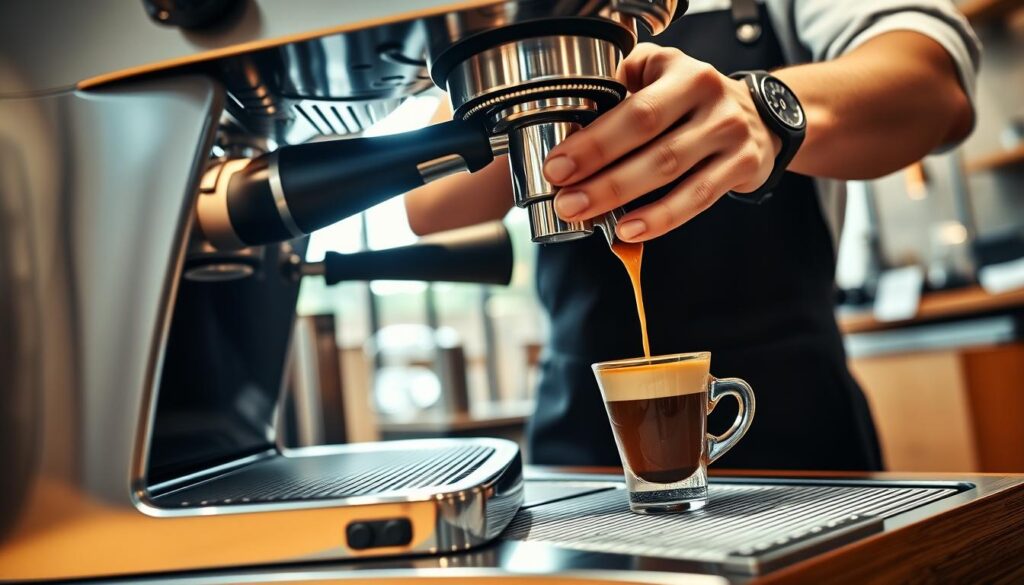
Caffeine Content in Espresso
Knowing the espresso caffeine content explains why many love this strong coffee. Espresso has a concentrated flavor and more caffeine than other coffees. A typical 1-ounce shot has about 63 mg of caffeine, making it a quick caffeine boost.
How Much Caffeine is in a Shot?
A standard espresso shot has about 63 mg of caffeine. But, this amount can change. The type of coffee bean used can greatly affect caffeine levels. For example, dark roast beans might have less caffeine than light roast.
Factors Influencing Caffeine Levels
Many espresso caffeine variables affect the caffeine in your shot. Important ones include:
- Type of Bean: Different beans can have different caffeine levels.
- Grind Size: A finer grind means more surface area, which can change caffeine release.
- Brewing Parameters: Water temperature and pressure during brewing are key for caffeine extraction.
Knowing these variables lets you adjust your brewing for better flavor and caffeine.
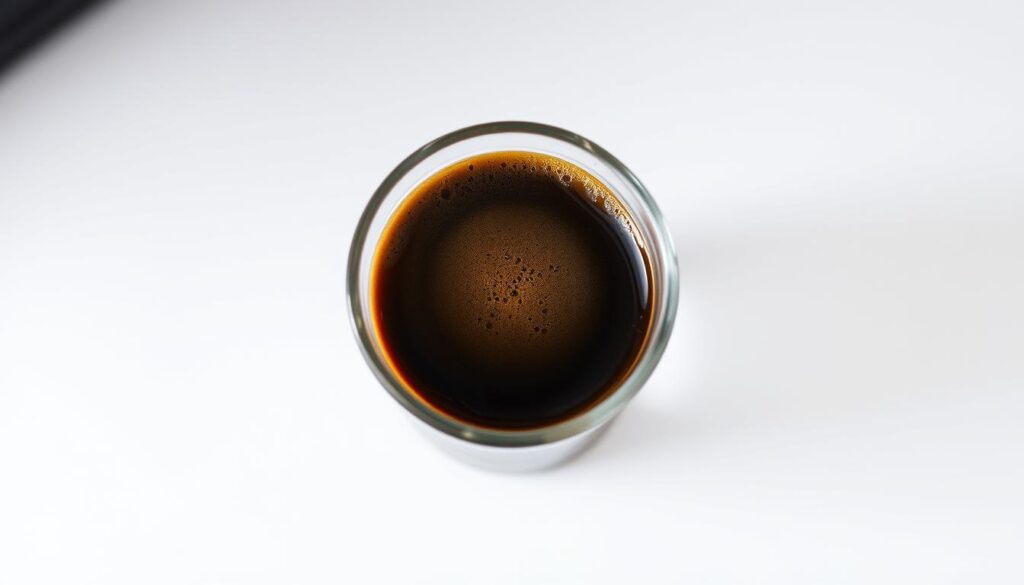
Caffeine Content in Drip Coffee
For coffee lovers, knowing the caffeine in drip coffee is key. You might ask how it compares to espresso. Drip coffee usually has 95 to 200 mg of caffeine in an 8-ounce cup. This amount can change based on the coffee type and brewing ratio.
Typical Caffeine Levels in a Cup
A standard drip coffee cup has about 120 mg of caffeine. Here’s a quick look at typical caffeine levels:
| Type of Coffee | Caffeine Content (mg per 8 oz) |
|---|---|
| Regular Brewed Coffee | 95-200 |
| Dark Roast Coffee | 85-165 |
| Light Roast Coffee | 105-205 |
| Decaf Coffee | 2-5 |
Variations Based on Brew Strength
The brewing method greatly affects the caffeine in drip coffee. Several factors play a role in the brewing strength:
- Grind Size: Finer grinds make stronger coffee.
- Brewing Time: Longer times extract more caffeine.
- Water Temperature: Higher temps help extract more caffeine.
- Coffee Variety: Different beans have different caffeine levels.
Understanding these factors lets you adjust your brewing to get the caffeine you want in your drip coffee.
Comparing Espresso and Drip Coffee
When we talk about coffee, we often compare espresso and drip coffee. Espresso has more caffeine per ounce, but your total caffeine can change based on how much you drink. Knowing these differences can change how you pick your coffee.
Espresso vs. Drip Coffee: A Caffeine Comparison
Espresso is strong, with about 63 mg of caffeine in a 1-ounce shot. But a 12-ounce cup of drip coffee has around 120 mg of caffeine. Even though espresso is stronger, drinking more drip coffee can give you more caffeine all day.
Serving Sizes and Consumption Habits
Looking at serving sizes is key when comparing espresso and drip coffee. Most people drink more drip coffee than espresso. While one espresso shot is powerful, drinking more drip coffee can actually give you more caffeine.
Here’s a comparison to show this:
| Coffee Type | Serving Size | Caffeine Content |
|---|---|---|
| Espresso | 1 oz | 63 mg |
| Drip Coffee | 12 oz | 120 mg |
| Drip Coffee | 24 oz | 240 mg |
| Espresso (3 shots) | 3 oz | 189 mg |
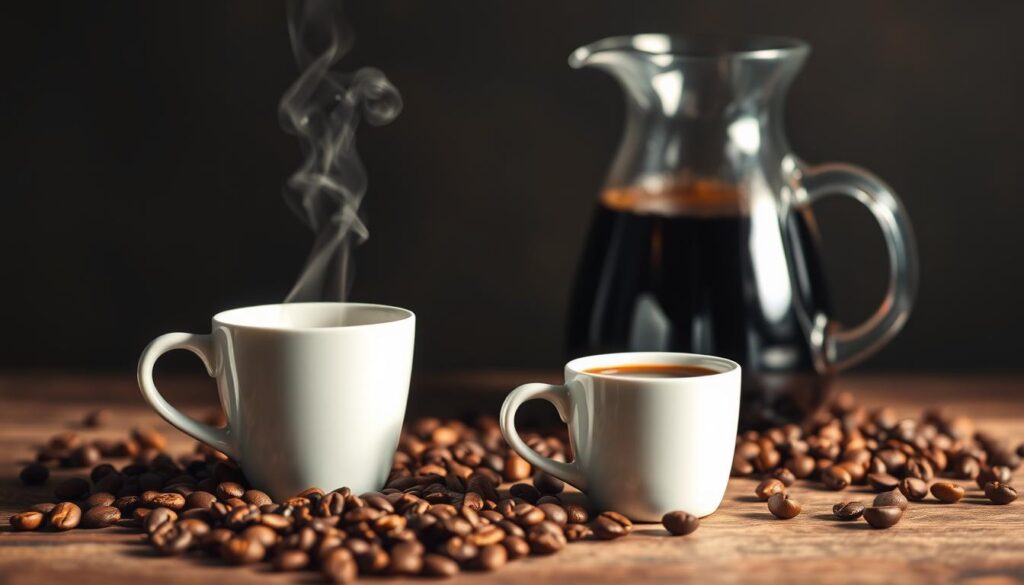
Additional Factors to Consider
Many things can change how you feel about caffeine. It’s not just about how you brew it. Ingredients affecting caffeine also play a big role. For example, adding milk or cream can make your coffee less strong. Knowing these details helps you make better choices about caffeine.
Other Ingredients that Affect Caffeine
Several things can alter how caffeine works in your body. Here are a few:
- Sweeteners: Sugar and artificial sweeteners can slow down how caffeine is absorbed.
- Flavorings: Syrups or spices can hide the natural bitterness, making you think caffeine is stronger.
- Alcohol: Drinking coffee with alcohol can make caffeine’s effects unpredictable.
Personal Tolerance to Caffeine
Your individual caffeine response is key to how you feel after drinking coffee. Everyone’s body processes caffeine differently. Knowing your own caffeine tolerance is very important. Several things can affect how sensitive you are to caffeine:
- Genetics: Your genes can influence how well your body breaks down caffeine.
- Regular Consumption: Drinking caffeine often can make you less sensitive to it over time.
- Health Factors: Certain health issues or medications can make you more sensitive to caffeine.
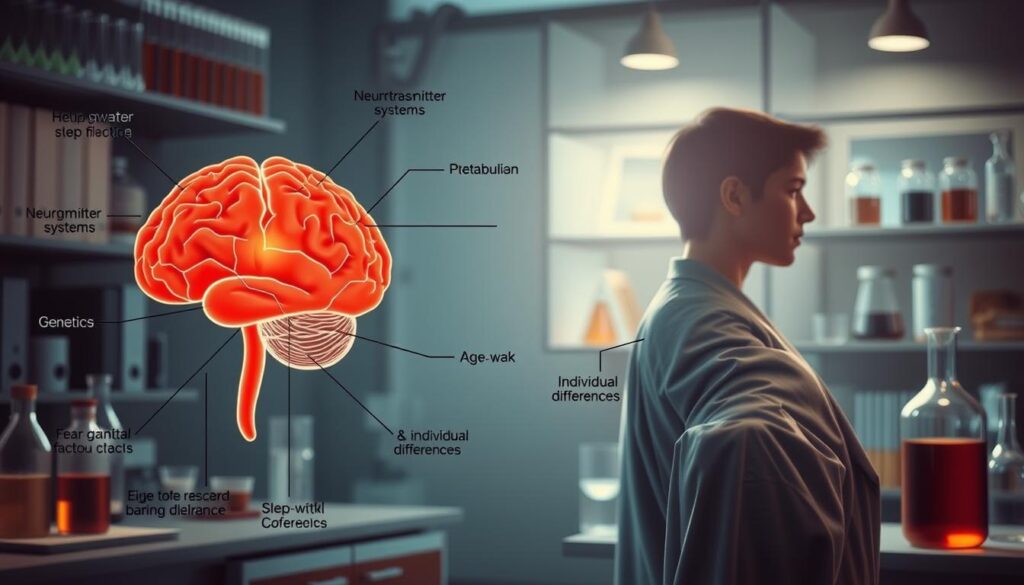
Making an Informed Choice
When choosing your coffee, it’s important to make smart choices. Whether you like the strong taste of espresso or the rich flavor of drip coffee, knowing what you prefer is key. Both methods offer different experiences, and thinking about your schedule and caffeine needs can help you pick the right one.
Choosing the Right Brew for You
Start by thinking about what you like in a coffee. If you want a strong taste, espresso might be for you. But if you prefer a milder flavor in a bigger cup, drip coffee could be better. Also, consider how much caffeine you can handle, as it affects everyone differently.
Tips for Enjoying Caffeine Responsibly
Drinking coffee in moderation is important for your health. To avoid feeling anxious or having trouble sleeping, drink it in amounts you can handle. Try drinking smaller amounts throughout the day to keep your energy up without feeling too jittery. This way, you can enjoy your coffee without it affecting your daily life.
